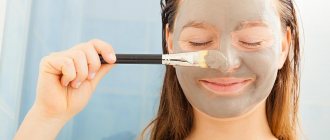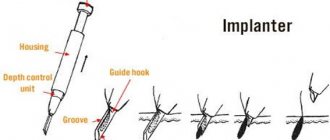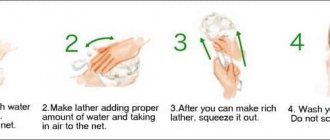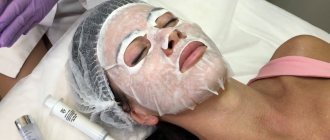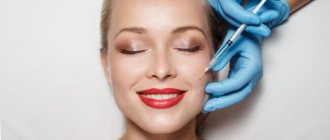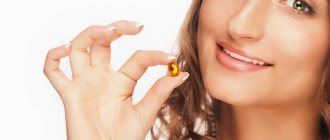Dermabrasion is a cosmetic procedure that smoothes the skin. Using a mini-mill, the top layer of the epidermis is removed, and after healing, a new, smoother and cleaner layer grows in its place. The procedure is effective and is used to eliminate various skin defects in patients of different ages.
However, patient satisfaction with the result largely depends on how well the expectations correspond to the capabilities of the method. Let's take a closer look at the dermabrasion procedure: what to expect and how the face is cleaned.
How does dermabrasion work with a cosmetologist?
The patient lies down on the couch. The doctor injects the treatment area with anesthetics and begins the session. The procedure is performed using a professional device, a cosmetology machine.
Using two attachments, a cutter and a brush, the removal of the upper layers of the epidermis begins. If the patient is worried, it is possible to administer sedatives, which will allow him to completely disconnect from the actions performed by the specialist. For very deep cleaning or large surfaces, general anesthesia may be used.
The depth of processing depends on the hardness of the brush and the roughness of the drill, as well as the level of pressure exerted on the cutter, the rotation speed and the characteristics of the skin. The greater the depth of impact, the more noticeable the result. However, in large areas this can lead to complications. Therefore, deep exposure is usually used to correct nasal deformities due to rhinophysoma, abrasion of scars, etc.
In salons, dermabrasion is most often used for blackheads, acne, to even out skin after acne, to get rid of age spots and other simple tasks. Reviews of dermabrasion cleansing are very good.
The procedure cannot be performed at home. Various chemical compounds sold as dermabrasion products are only conditionally so. They allow for slight exfoliation of the skin, but the effect is very weak. Only hardware dermabrasion is effective. However, its use is safe only if the work is carried out by a cosmetologist.
Features of dermabrasion
The method involves the controlled impact of an abrasive device on the dermis. During the procedure, the first layer of the epidermis is removed, along with which skin imperfections are eliminated. At the Provence aesthetic medicine clinic, the session is performed by a qualified dermatologist with extensive experience. Proper operation of the device will not cause harm and will not provoke negative consequences.
It is worth noting that dermabrasion not only quickly, but also permanently eliminates skin imperfections. The course is designed for 1-6 procedures, after which the face becomes smooth, young and silky.
What to expect after the procedure
The course and duration of the rehabilitation period depend on the depth and area of exposure. If a small pigment spot was treated, healing will occur faster than if the entire face was treated. Typically, the full recovery period takes up to 12 weeks. During the first 8 days, active skin regeneration occurs, and then, as the epidermis is renewed, it acquires a natural color and appearance. The reddish cover gradually gives way to pink, which becomes paler until complete healing occurs.
During the entire recovery period, it is not recommended to use decorative cosmetics, as well as various care products, without consulting your doctor. A seemingly harmless chemical at this time can cause noticeable harm to the skin.
During the recovery period it is necessary:
- Clean the skin thoroughly to prevent infection and crusting.
- Apply healing ointment and change the bandage regularly in accordance with the doctor's recommendations.
- Avoid direct sunlight on skin damaged during cleaning.
- Use sunscreen as it heals, preferably SPF
If deep treatment was carried out, you will need to visit a doctor during the rehabilitation period.
Indications for dermabrasion –
The following skin problems are well treated with dermabrasion:
- scars due to acne,
- keloid and traumatic scars (scars),
- fine wrinkles, stretch marks,
- uneven skin tone due to birthmarks and age spots,
- tattoo removal,
- removal of skin keratoses (early stage of skin cancer).
Dermabrasion: before and after photos
How is the dermabrasion procedure performed?
Typically, facial dermabrasion is performed on an outpatient basis under local anesthesia, but when treating large areas of skin, the intervention can be carried out in a hospital setting, also under local anesthesia and additional premedication with sedatives. When the skin becomes numb after anesthesia, it is treated with rotating abrasive instruments (diamond wheels, burs, brushes).
During the procedure, the skin is damaged in a controlled manner, with the formation of a wound surface on the treated area (Fig. 3, 4). Next, the wound surface heals with the formation of young skin, which, as a rule, is significantly superior in its aesthetic properties to the skin that was there before.
Immediately after the operation, a postoperative bandage is applied (Fig. 5), which is usually removed 24-48 hours after the procedure. Depending on the depth of skin removal, its complete restoration takes on average from 10 to 30 days. The new layer of skin will be slightly swollen, sensitive to various irritants, and appear bright pink for several weeks. Most patients can return to normal life after approximately 2 weeks.
Dermabrasion: video
Which is better: laser peeling or resurfacing?
Many patients, trying to understand the intricacies of laser rejuvenation, ask what is better to choose: laser resurfacing or peeling?
Laser rejuvenation is one of the most popular procedures, which is offered today in many clinics in Moscow.
Safety for the body and truly impressive “before
and after
” results are what attract patients.
In addition, a laser
does not take much time: its duration is only 30-60 minutes (depending on the treatment area).
laser resurfacing methods have in common
and
laser peeling
is that they use two types of
fractional
lasers - erbium and carbon dioxide (CO2).
Both procedures promote skin renewal at the cellular level. The fundamental difference lies in the depth of impact. In peeling mode, the laser beam penetrates no more than 30 microns, while in grinding the penetration depth is 100-150 microns. These methods also differ in cost
and number of sessions.
Laser peeling
Fractional laser peeling
has a superficial effect on the skin, affecting only the cells of the epidermis. The laser beam destroys dead cells and stimulates regeneration processes. Typically, such peeling is prescribed if indicated after 25 years, and its annual implementation can significantly prolong the youth and freshness of the skin.
Benefits of the procedure:
- 1-2 sessions are enough to renew the skin
- fast rehabilitation
- affordable price.
What result should you expect?
Effect of laser peeling
visible even after a single procedure, not only in life, but also in
“
before and after
photo :
- complexion becomes fresher and more radiant
- small wrinkles are smoothed out;
- enlarged pores are smoothed out;
- water balance and sebum production are normalized;
- pigmentation lightens.
Laser resurfacing
Compared to laser peeling, resurfacing has a deeper and more extensive effect on the skin, affecting not only the epidermis, but also the dermis. At the dermal level, old defective collagen is destroyed and the process of producing new collagen begins. Thus, in 4-5 sessions, the skin structure is completely renewed on two levels. Laser resurfacing is recommended for patients with signs of aging in areas that are visible: face, arms, neck and décolleté. It is also widely used to remove any scars, including post-acne.
Benefits of the procedure:
- pronounced anti-aging effect;
- possibility of intensive correction of uneven terrain;
- When used as a course, the effect lasts for several years.
What result should you expect?
After a course of laser resurfacing, the skin acquires an even texture, age-related changes and defects disappear:
- the smoothness and elasticity of the skin returns,
- complexion becomes healthy,
- deep wrinkles and enlarged pores are smoothed out,
- Hyperpigmentation is completely eliminated.
Comparative table of indications
| Laser peeling | Laser resurfacing |
| Small, mild wrinkles | Deep age wrinkles |
| Loss of skin tone | Skin laxity, gravitational ptosis in the initial stage |
| Hyperpigmentation: freckles, age spots, stagnant post-acne spots | Deep age-related hyperpigmentation |
| Loss of skin tone | Skin laxity, gravitational ptosis in the initial stage |
| Uneven skin texture, enlarged pores | Scars after injuries, operations and post-acne (atrophic, hypertrophic, keloid) enlarged pores |
| Uneven skin tone, dull complexion | Hyperkeratosis, sallow skin color |
Do you want to know exactly which procedure is best for you?
Sign up for a free consultation with our dermatologists!
Call by phone.
Dermabrasion Alternatives –
Dermabrasion - reviews about the technique are only positive if the procedure is performed by an experienced dermatologist or plastic surgeon.
In addition, the undeniable advantages of the method are high efficiency and relatively low price (24stoma.ru). However, it should be noted that dermabrasion is rarely practiced nowadays. This is due to the fact that very few doctors have sufficient qualifications and training to perform it. Dermabrasion (without compromising the quality of the procedure) can be replaced by the following modern techniques:
- Laser dermabrasion of the face (Fig. 6) –
this is nothing more than a method of laser skin resurfacing. This skin resurfacing is done using CO2 or erbium lasers. Laser technologies are safer (less chance of bleeding and skin hyperpigmentation), and the results of their use are much less dependent on the skill of the laser operator.
- Carrying out medium or deep chemical peeling of the face - this technique has all the same indications as dermabrasion.
The process of removing the upper layers of skin in this case occurs using solutions of various acids, for example, glycolic or salicylic.
Microdermabrasion
My child has finally started going to kindergarten regularly, I haven’t gone to work yet, and as a result, I have free time and extra thoughts. Here is one of them: “I’m 32 years old, old age is just around the corner, it’s time to somehow start taking care of my face, do regular skincare procedures, go to a cosmetologist, in the end.” Having studied the question, I found out that salon peeling is a very useful procedure for the skin. Photos of faces after chemical peeling somehow scared me, so I decided on microdermabrasion for myself.
A little about my skin: normal, slightly oily on the nose with blackheads. For daily care - morning and evening, foam cleanser + tonic. Last year I started using a scrub once every 1.5 weeks (by the way, this fact had no effect on the number of blackheads). Basically, that's it. It is quite rare to use cream only before bedtime. Usually it happens like this: “I need to start using the cream regularly,” I think. I buy a cream that is not the cheapest, smear it on for 2-3 weeks, then I start to get lazy about doing it every day (especially since I don’t see any effect from the cream) and gradually quit. It's the same story with masks.
In general, I came, the verdict was this: there are a lot of blackheads on the nose, so first of all it is necessary to do manual facial cleansing, and then after a couple of days microdermabrasion. I read that up to 5-6 procedures are necessary, but the cosmetologist said that my skin is soft and there is no strong keratinization, one is enough for me. By the way, she was very surprised that I was 32 and said that I was well preserved for my age (kind of a compliment). In general, on the same day they cleaned me, except for my nose, there were no clogged pores anywhere else. But after cleansing, the skin became very dry and flaky, especially on the nose. But this seems to be within normal limits.
After 4 days I came for microdermabrasion. First, the skin was cleaned, then the procedure itself began: a special nozzle coated with abrasive particles was passed over the face. The feeling is normal, I even liked it. All this lasted 7-10 minutes. The procedure itself cost 1,000 rubles, after which it was still possible to make a mask for 350 rubles. I didn’t intend to, but the cosmetologist said that after cleansing the skin became very dry, plus after peeling it also needed nutrition, blah blah blah, so they made me a nourishing aldehyde mask. When I stood up and looked at my face, on my nose I saw pieces of green dead skin, really green, with normal pink visible underneath. The cosmetologist said that they did not come off during peeling, but they would come off when washing. The rest of the face was visually unchanged, just reddened. Recommendations: buy a rich nourishing cream, because after peeling the skin needs nutrition.
In the evening, I washed my face as usual and applied the moisturizing cream that was in stock (I didn’t have time to buy a nourishing oily one), my skin stung noticeably when applying the cream. The reflection in the mirror in the morning made me very, very happy: the redness had subsided, the tone was perfect, the relief was perfect, plus the skin felt amazingly silky to the touch. My green pieces on my nose fell off. For those. who is waiting for a miracle - expression lines have not disappeared, pores have not narrowed. I walked around happy all day, and in the evening I washed my face and applied cream. In the morning I wake up, everything is no longer so rosy, the skin became irritated, dry, began to peel, and by the evening I was covered in pimples, about 10 of them popped up. I was shocked, especially since this all happened on March 7, on the eve of my favorite holiday. The pimples were strange, without pronounced inflammation, without a head with pus, and most of them were painless. My acne My acneThe process of pimple formation lasted 4 days, i.e. old pimples did not go away, but new ones appeared. I heavily coated myself with Zenerite and didn’t use any creams at all, but somehow it didn’t get any better. On the contrary, Zenerit dried out my already irritated skin even more. After 3 days of struggle, I quit Zinerit and changed the strategy: masks with white clay, chamomile and tea tree oil and active moisturizing with my cream morning and evening. And the acne began to disappear literally before our eyes, they simply turned pale and disappeared. I don't know what it was and why it happened. Some kind of allergic reaction? Insufficient hygiene of skin damaged by peeling? Irregularities during the procedure? I don’t know, but I went through several very unpleasant days, and, thank God, I escaped with a slight fright. After acne disappears
After a little over a week, my skin returned to normal, but became very sensitive and dry. If earlier the feeling of tightness after washing was easily removed with a tonic, now this was not enough, the skin still remained tight, and it was necessary to apply cream. After two weeks it went away. Overall result: the skin is the same as it was before the procedure (ordinary skin, not particularly smooth, not particularly tender).
Despite my bad history with acne, I still hope that microdermabrasion has benefited my skin by renewing it (the green nose episode especially gives me this hope). Will I do it again? Perhaps, but this time with the most thorough aftercare and without a mask.
Dermabrasion
Best suited for removing scars, birthmarks, as well as facial skin imperfections such as:
- Lines around the eyes, nose or cheeks;
- Scars from acne, chickenpox, or other injuries;
- Spider veins;
- Enlarged pores.
The essence of this procedure is to deliberately “injure” the skin so that it can subsequently begin the healing process and, therefore, be gradually renewed. It consists of layer-by-layer grinding of the skin using a special apparatus.
Several dermabrasion methods are used today:
- Laser dermabrasion;
It is carried out using a special device that affects the skin with a beam of light. It effectively removes acne scars, fights the first wrinkles, smoothes and normalizes complexion. This procedure works on fairly deep layers of the skin.
- Diamond dermabrasion;
Just like laser, this type of dermabrasion penetrates quite deeply, but its essence is that the skin is exfoliated using special crystals, which reduces the risk of injury to the skin.
- Mechanical dermabrasion.
A very aggressive type of dermabrasion, as it acts quite deeply and exfoliates many layers. Today it is usually used locally to reduce trauma - to treat large post-operative scars, deep wrinkles or severe acne scars.
Despite the fact that both procedures work well against almost any imperfections in the upper layers of the skin, you need to understand that chemical peeling is suitable only if the person does not have any allergic reactions to the components of the drug, and, in addition, the procedure is not carried out during pregnancy or lactation. Dermabrasion cannot be performed if a person has severe chronic illnesses or injuries, has impaired blood clotting, and is also prone to the formation of keloid scars. In addition, despite the fact that both chemical peeling and dermabrasion work well on acne scars, inflammatory and purulent diseases of the facial skin themselves are a contraindication for both procedures.
You can also learn more about other methods of facial rejuvenation from the sections “Eyelid surgery” and “Lipofilling”
